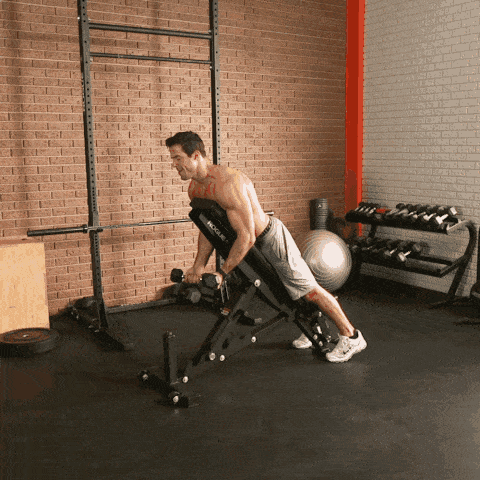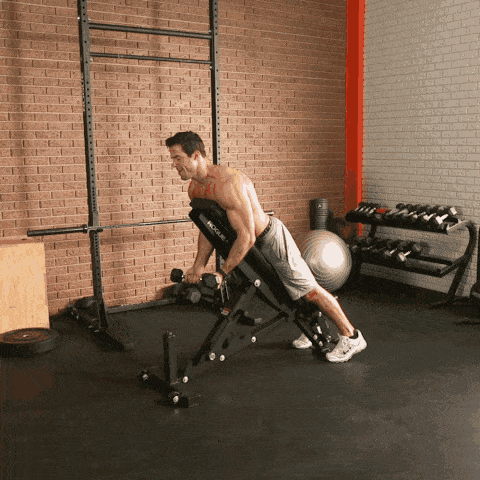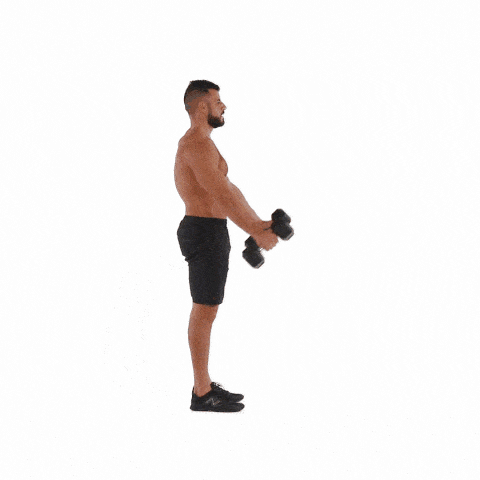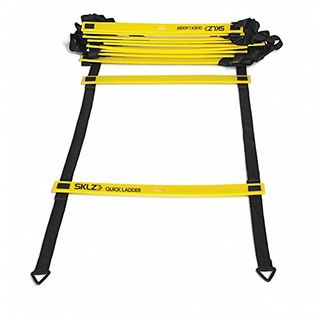
It’s going to be weird seeing Richard Sherman in a new uniform this season — but the outspoken NFL veteran’s fans can still expect the same uncompromising performance and candor from their favorite player.
After seven seasons with the Seattle Seahawks, the Super Bowl champion and four-time Pro Bowl cornerback was cut, as the Seahawks moved away from the “Legion of Boom” defensive backfield that was one of the league’s best from 2011 to 2017 and took home Super Bowl XLVIII in 2014. But Sherman bounced back and inked a three-year, $39 million deal with the Seahawks’ NFC West division rival San Francisco 49ers the very next day.
Since signing with the 49ers, the player has, unsurprisingly, sounded off on his former team — but he has also been working hard to prepare for his first season as a 49er.
We caught up with Sherman on the heels of an offseason workout at the UFC Performance Institute, which he took part in thanks to his association with BodyArmor, the sports drink he’s been a pitchman for (and invested in) since 2014.
Although being on a new team might take some adjustment for Sherman, the move doesn’t affect the veteran corner’s fitness regimen much.
“I just need grass, maybe a few ladders, some cones,” Sherman told MensHealth.com. “A lot of the equipment that I had in Seattle, I have in San Fran. It doesn’t change much.”
The Compton native graduated from Stanford University, which is just over 20 minutes from the 49ers’ home, Levi’s Stadium, so you might say he’s familiar with the Bay Area and California at large.
Recovering from major injury and resulting surgeries might bring more of a challenge to Sherman’s upcoming 49ers debut, however. He had a surgery on each of his Achilles just five months apart in November 2017 and March 2018, respectively. The first procedure was to repair his season-ending ruptured right Achilles. The second surgery — this time on his left Achilles — was more of a “cleanup” procedure, according to Sherman.
Although Sherman says that he has always incorporated preventative measures into his training, he’s being extra keen about them during this offseason.
“I’ve always kind of done preventative [exercises],” Sherman says. “As you play longer in the league, you get more preventative work. You understand what your body needs to try to get through a season.”
Sherman also believes the surgeries forced him to give his body a long-awaited chance to rest and get healthy.
“It has been a lot of deep playoff runs and more games on my body than probably normal players who don’t have to deal with the postseason and deep runs,” Sherman explains. “I think it has kind of helped me. My body needs time to recover.”
After his UFC Performance Institute workout, Sherman broke down the exercises and training drills that he absolutely can’t do without as he preps for a new season in San Francisco.
Richard Sherman’s Offseason Workout
Shoulder Mobility Dumbbell T, Y, I Series
3 to 5 sets, 10 to 12 reps
Shoulder flexibility and stability are crucial to a cornerback’s success in the NFL. Most pass plays begin with a battle for leverage between the corner and wide receiver within the five yards after the line of scrimmage, where contact is allowed and defensive players push or “jam” the receivers out of their intended routes. Corners also have to reach up to bat down passes, and of course user their shoulders to make tackles.
Sherman uses the shoulder mobility dumbbell T, Y, I series to keep his shoulders strong. To do the exercise, he grabs 10- to 12-pound dumbbells in each hand — “20[-pound dumbbells] if I’m really feeling good” — and fully extends his arms.


Men's Health
“You’re coming from your hips, you’re going all the way up to your shoulder height with your palms facing the ground at first. That’s the T,” Sherman explains about the first leg of the series. “Then you bring your thumbs up with your arms more at a 45-degree angle posted in front of you and then you bring your arms above your head now. That’s the Y — kind of like you’re doing the YMCA ‘Y.’” [shown here using a bench for support]


Men's Health
“Then the I, you bring your arms parallel to one another and bring them below your head and that’s I,” he said.
The completion of the T, Y, I counts as one rep. Sherman aims for 10 to 12 reps across 3 to 5 sets.


Men's Health
“You’re tackling so much, especially on the defensive end, that you got to make sure your shoulders are stable,” Sherman stressed. “[The series] stretches your rotator cuffs, tightens those ligaments in the shoulders to make sure that when you take your big hits or you’re delivering big hits, you don’t dislocate your shoulder or pop it out of place. You’re hitting some pretty big dudes at great speeds and taking a lot of pounding, so you have to do things like that to make sure your muscles are prepared for that.”
W Drill
Width of the field, 2x
The ability to change direction on the field is mandatory for any NFL defensive back. Corners and safeties partly hone their footwork by doing the W drill. How is it done? Simple. Burst forward and then backpedal in the shape of a W.
At this stage of his career, Sherman says he runs the staple drill twice across the field’s width, which is roughly 160 feet. The W helps corners go from bursting forward to backpedaling in seconds — sequences that they commonly find themselves in on the field, while trying to deny receivers the ball. Even if you aren’t into football, this is a pretty cool fitness test to see where your footwork stands.
Wall Sit
5 reps, 30 to 45 seconds
Lean with your back to the wall and attempt to sit down at a 90-degree angle like you would on a chair … except there’s nothing under you supporting your weight. That’s a wall sit.


Men's Health
Sherman said he attempts to hold the position for 30 to 45 seconds at a time, going for two minutes with a 45-pound plate on his legs “when I’m at my best and really challenging myself.” Once you’re comfortable with the position, try adding more elements like plates to make it more difficult.
He credits the exercise for his leaping ability. “Those wall sits strengthen all the muscles that you use when you’re jumping,” Sherman claimed. “Any time you jump, you’re kind of getting in the wall-sit position to create power. Or even if I’m backpedaling, my legs are coiled, and when I’m coming out of my break, I’m extending my legs. Wall sits just make my body comfortable in those positions and really strong.”
In-And-Out Ladder Drill
Each variation once
Agility ladders are sprawled out on the field and utilized by a number of different position players in the NFL. As a wily vet, Sherman has mastered a ton of variations. “One foot in/one foot out, two feet in/two feet out kind of like hopscotch, high knees, lateral in and out, I’ll do the Ickey Shuffle,” Sherman said.
The drills obviously help with footwork and foot speed, but Sherman uses high knees on the ladder to help with another area as well — his hips. “If you’re doing it right, when you’re doing your high knees, it will work your hip flexors, it will work the speed at which you get your feet up and down,” he claimed. “It forces you to make all your moves and all your explosive movements in a smaller space. You gotta just do it up and down.” That hip movement is imperative for when Sherman turns his head to make a play to break up a pass attempt.
Game to try an agility ladder out but need one of your own? Check this one out.

SKLZ
Buy Now
Single foot in/Single foot out Circle Drill
10 to 20 seconds, as many reps as possible (AMRAP)
The speed of football seems to only get faster with each NFL season. But while many players are faster than ever, the real challenge becomes controlling and harnessing that speed on the field.
Sherman says he keeps his speed under control with a drill that uses an “individual circle,” moving laterally back and forth, in and out of the zone with one foot at a time as many times as possible for 10 to 20 seconds. “You got to be in complete control,” Sherman advises. “You can’t be leaning.”
Coming off of the two Achilles operations, Sherman finds the drill especially challenging. “It challenges your ankles, it challenges your body control,” he said. But that’s not all; he also shared that the drill “simulates press coverage” and “the foot speed you need to react to a wide receiver.”
If Sherman reacts to wide receivers this season the way he has over the course of his career, the 49ers and their fan base should be more than pleased with his acquisition
Source: Read Full Article
